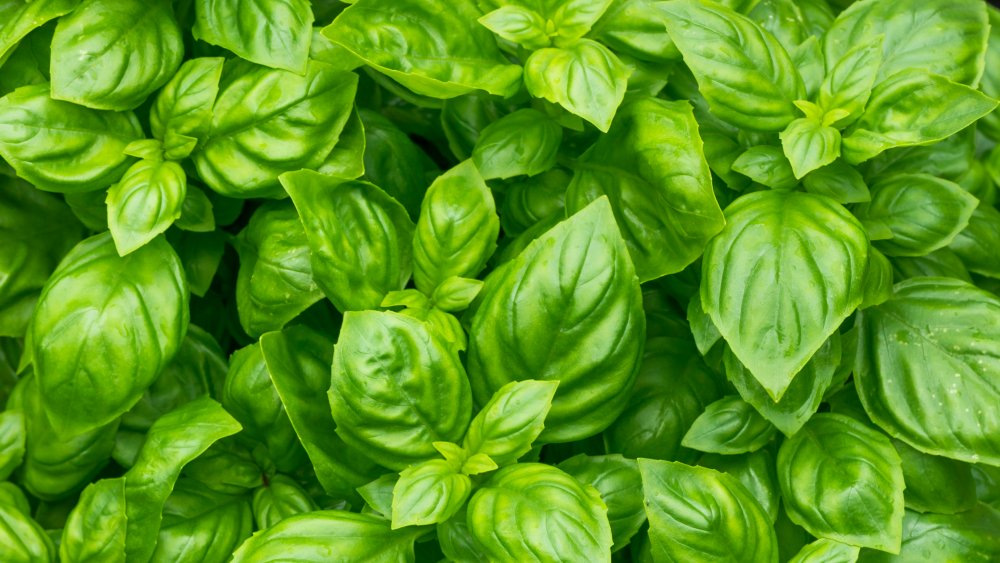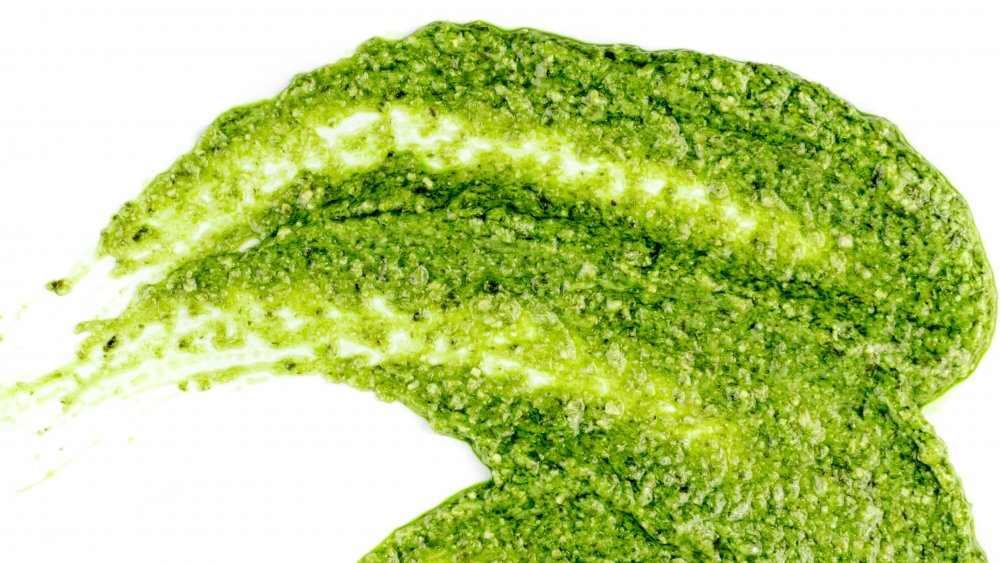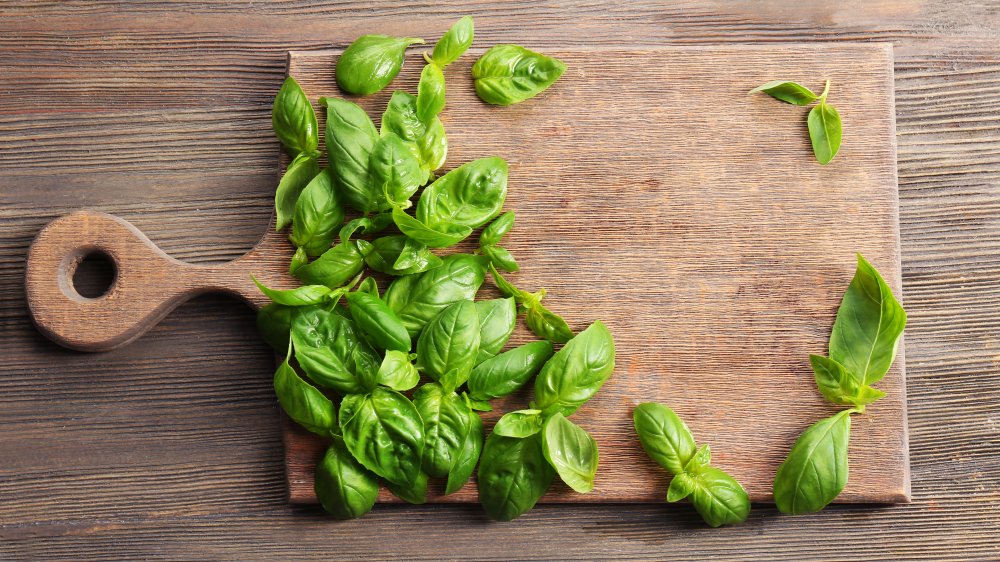Can You Freeze Basil?
We've all been there — you find a recipe you're really excited about and the last ingredient on the list is fresh basil. Easy enough to source, but with herbs a little goes a long way. Once you're home and finished cooking that amazing meal, you find yourself with a (literal) bunch of formerly beautiful produce quickly deteriorating in your fridge.
While many hardier herbs like rosemary or thyme freeze easily, basil is not one of them. Its beautiful green leaves become shriveled and black in the cold, and it can take on some of the funky smells and flavors from the fridge. While best used fresh, there are two tried and true methods to freezing basil, each with their own pros and cons.
Puree basil before freezing it
The best way to retain basil's beautiful green color is to make a puree with olive oil before freezing. This is basically just making pesto without all the ingredients. The downsides to this process is that you have to add olive oil to make the puree, which can mess with the flavor of your recipe, or if you're looking to have whole pieces of basil visible to add color, say for a red sauce or in Thai food, you obviously won't get that with a puree.
The Kitchn recommends using 1 tablespoon of olive oil per 1 cup of fresh basil leaves. Blend your basil leaves and olive oil in a food processor or blender until smooth, and then pour the puree into ice cube trays or a freezer bag and lay flat. If you use the freezer bag method, you can break the puree into more manageable chunks once frozen. Transfer the cubes or pieces to a freezer safe container once they are fully frozen.
Try blanching basil that's destined for the freezer
Another method is to blanch the leaves and freeze then whole. The downside to this method, according to food blog An Oregon Cottage, is the leaves can quickly begin to wilt and brown once brought back to room temperature, but if you want to keep them whole this is the best process for you. To blanch, bring a pot of water to a boil and cook your clean basil leaves for about 15 seconds. Transfer the leaves immediately to an ice bath and pat dry. Next, spread the leaves out on a wax paper lined tray and freeze, making sure the leaves don't overlap. After they are fully frozen, transfer the leaves to a freezer safe container.


